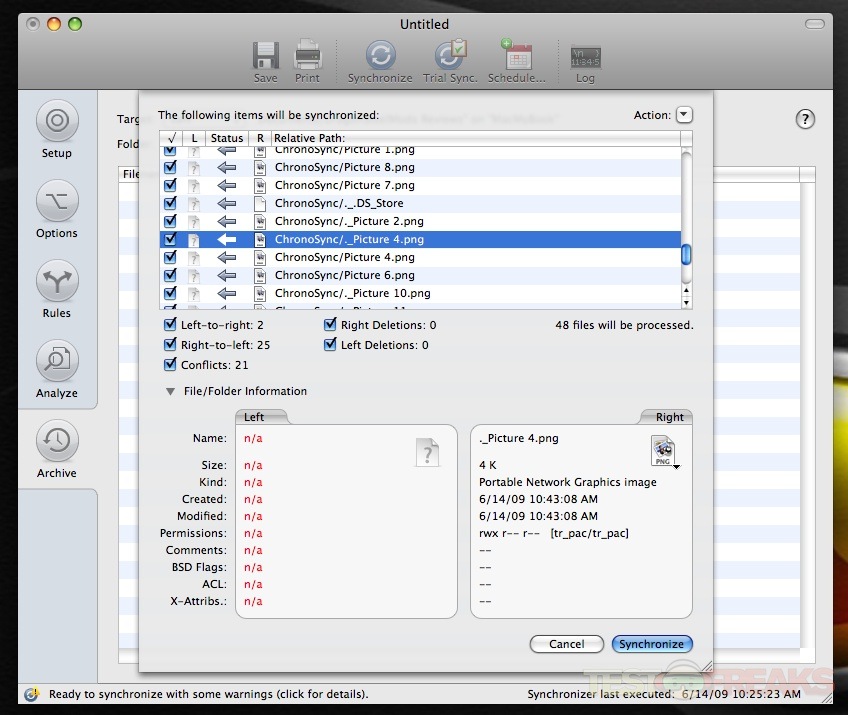
ChronoSync is one, though a bit technical for the average user. Find a true client-to-client (no server, no cloud storage) tool. QNAP and others may have similar sync optionsĤ.
CHRONOSYNC REVIEW 2014 FULL
More money up front, but full control and no ongoing cloud charges. Instead of renting a service like #2 above, you buy and run your own syncing service. If you are interested in running your own sync server, Synology offers a nice tool for syncing called Drive. Mega used to offer up to 50GB of free space, and has a good Mac and iOS client.ģ. One bonus you get for your money: All your sync'd files are also kept in the cloud.which gives you a layer of protection against catastrophic loss (like your house burned down with all your computers and backups). So you have to pay for the space you use, as the files get sync'd (copied over to) the server, then pushed out to other participating machines. Many syncing tools can do what you ask (iCloud, OneDrive, Dropbox, Mega, Box, etc., but the vast majority are cloud based. You could work on the files on the server.but you need a server, and there are still some limitations and performance issues.Ģ. Traditional file sharing won't sync between different machines. The applications on both Macs should also be updated to the same version.ġ. However, in order to use some of them, such as ChronoSync Express, the Macs you want to synchronise must run the same version of MacOS. There are a few different apps you can use.
CHRONOSYNC REVIEW 2014 OFFLINE
If you are working offline or don’t want to use cloud storage, you can save your files on your Macbook and sync them later. You can access and work with the same data on different Mac devices. If you make an account on one of these and sign in using your email, you will be provided with the up to date version of your documents. All of these keep your data online rather than on a local Mac. That way you can access emails, contacts, pictures and so on from different Macs.Īnother fairly straightforward method is to use an alternative cloud storage system such as Dropbox, Google Docs or Office 365. You can access them by logging into your Apple ID on other Mac and iOS devices. Apple-specific apps automatically store your data there. One way to sync your data on multiple Macs is by using iCloud.

The cloud has been that solution for quite a few years now.
CHRONOSYNC REVIEW 2014 UPDATE
you still need the cloud in some form, because the machines have to constantly communicate and update in order to achieve that, and the software needs to manage conflicts, etc. If you're looking for a "I want all my data stored locally and constantly synchronized" solution. It works constantly and beautifully for me - multiple Macs, iPhone, iPad. The data is centrally stored - the cloud version being the "master." Changes are pushed up to the cloud and then pushed down from the cloud to the other computers and mobile devices attached to that cloud account. Many cloud platforms (including iCloud) also provide for collaborative/simultaneous manipulations of the same files. Overall, the cloud (whether iCloud or other) is the solution to "my data everywhere" - it's been that way for quite a few years. There's a difference as to whether you need multiple users simultaneously working on the same documents, or that you simply want the same data available to you on whatever Mac you use.


 0 kommentar(er)
0 kommentar(er)
